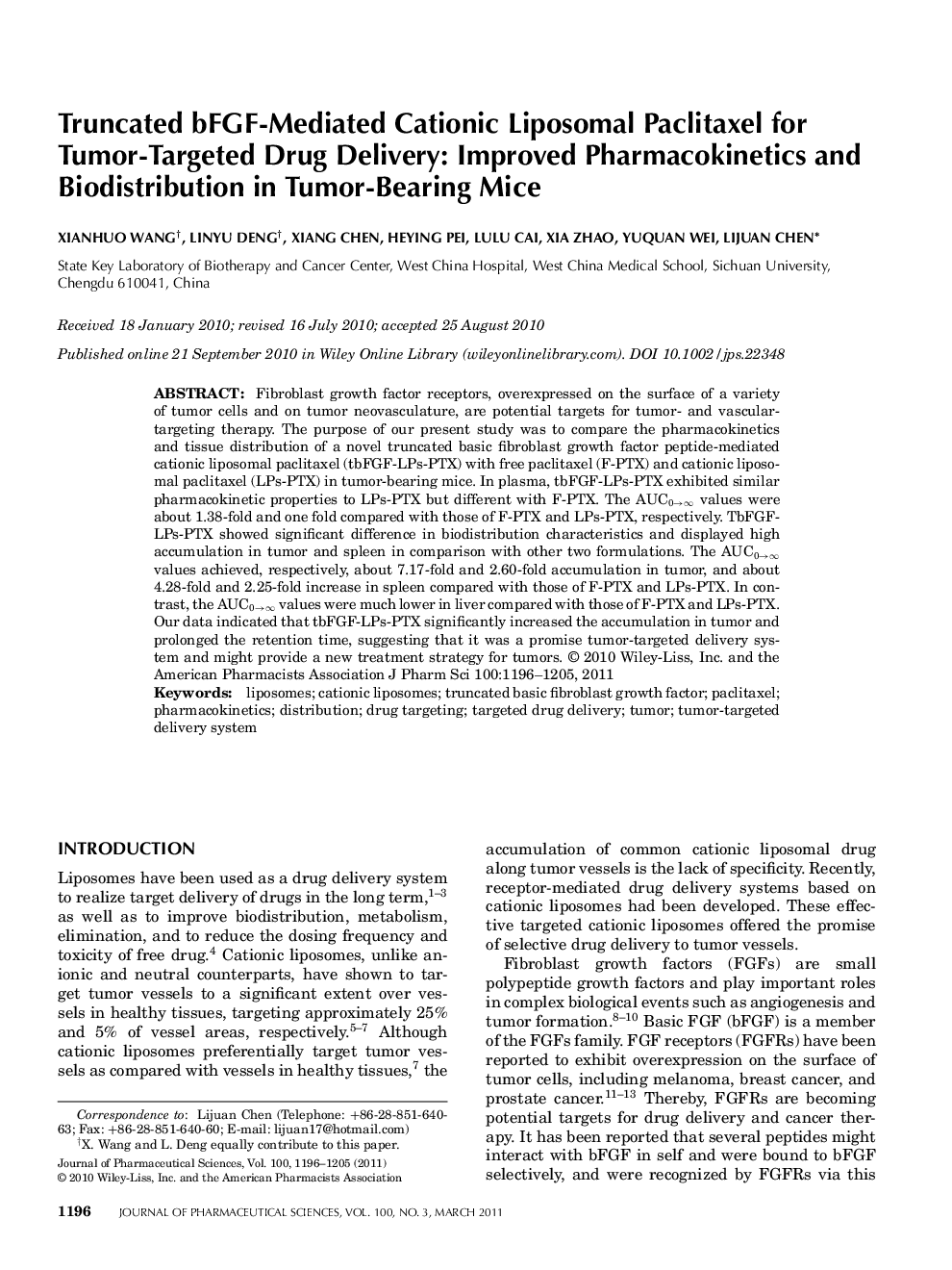| Article ID | Journal | Published Year | Pages | File Type |
|---|---|---|---|---|
| 2485832 | Journal of Pharmaceutical Sciences | 2011 | 10 Pages |
Abstract
Fibroblast growth factor receptors, overexpressed on the surface of a variety of tumor cells and on tumor neovasculature, are potential targets for tumor- and vascular-targeting therapy. The purpose of our present study was to compare the pharmacokinetics and tissue distribution of a novel truncated basic fibroblast growth factor peptide-mediated cationic liposomal paclitaxel (tbFGF-LPs-PTX) with free paclitaxel (F-PTX) and cationic liposomal paclitaxel (LPs-PTX) in tumor-bearing mice. In plasma, tbFGF-LPs-PTX exhibited similar pharmacokinetic properties to LPs-PTX but different with F-PTX. The AUC0ââ values were about 1.38-fold and one fold compared with those of F-PTX and LPs-PTX, respectively. TbFGF-LPs-PTX showed significant difference in biodistribution characteristics and displayed high accumulation in tumor and spleen in comparison with other two formulations. The AUC0ââ values achieved, respectively, about 7.17-fold and 2.60-fold accumulation in tumor, and about 4.28-fold and 2.25-fold increase in spleen compared with those of F-PTX and LPs-PTX. In contrast, the AUC0ââ values were much lower in liver compared with those of F-PTX and LPs-PTX. Our data indicated that tbFGF-LPs-PTX significantly increased the accumulation in tumor and prolonged the retention time, suggesting that it was a promise tumor-targeted delivery system and might provide a new treatment strategy for tumors.
Keywords
Related Topics
Health Sciences
Pharmacology, Toxicology and Pharmaceutical Science
Drug Discovery
Authors
Xianhuo Wang, Linyu Deng, Xiang Chen, Heying Pei, Lulu Cai, Xia Zhao, Yuquan Wei, Lijuan Chen,
